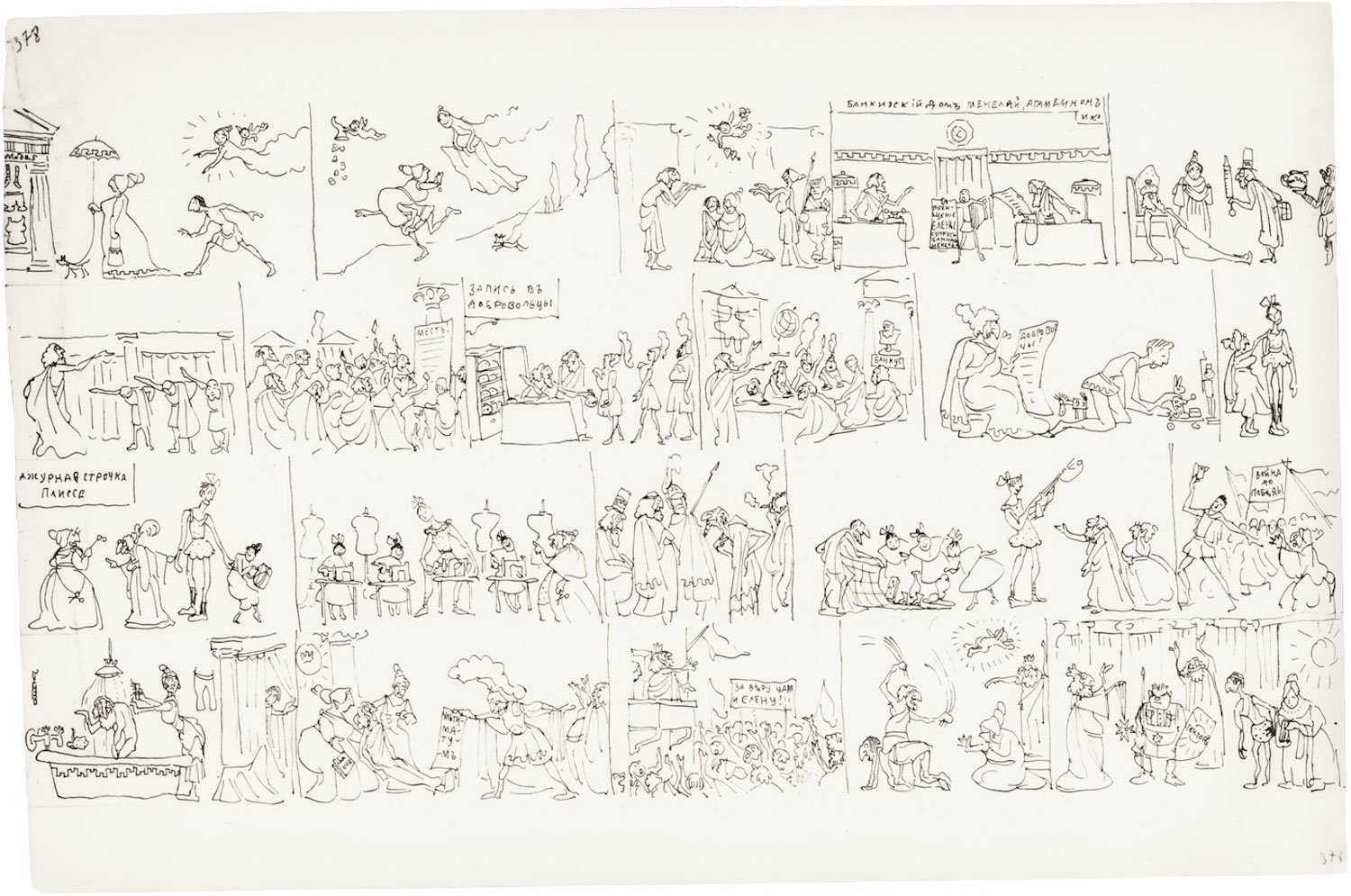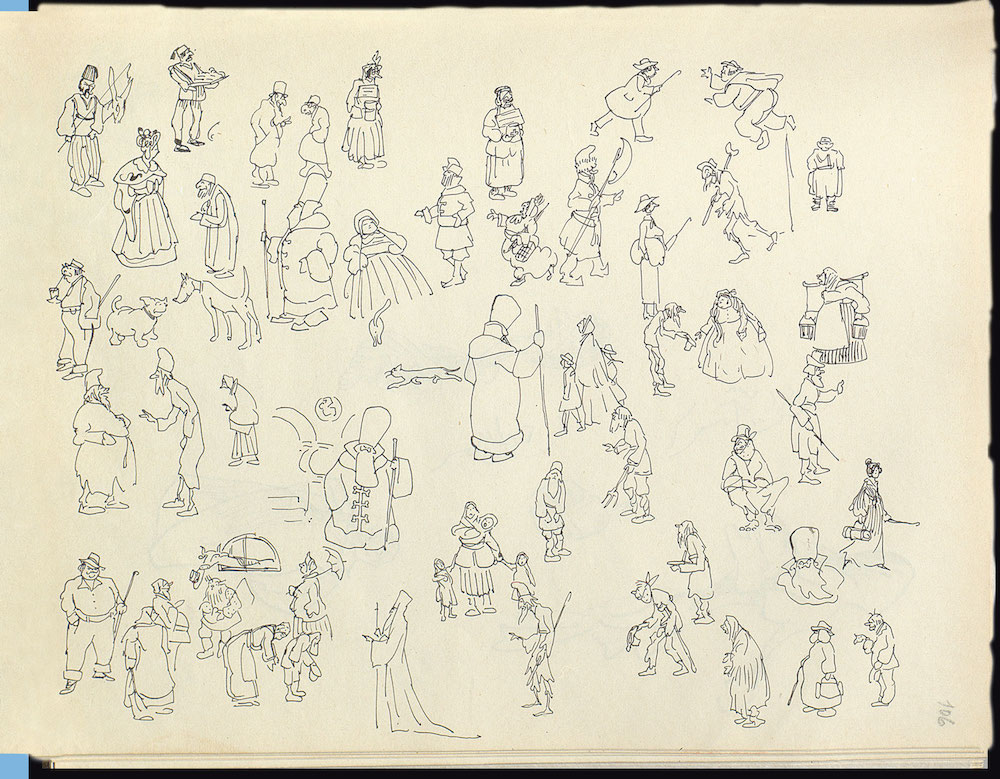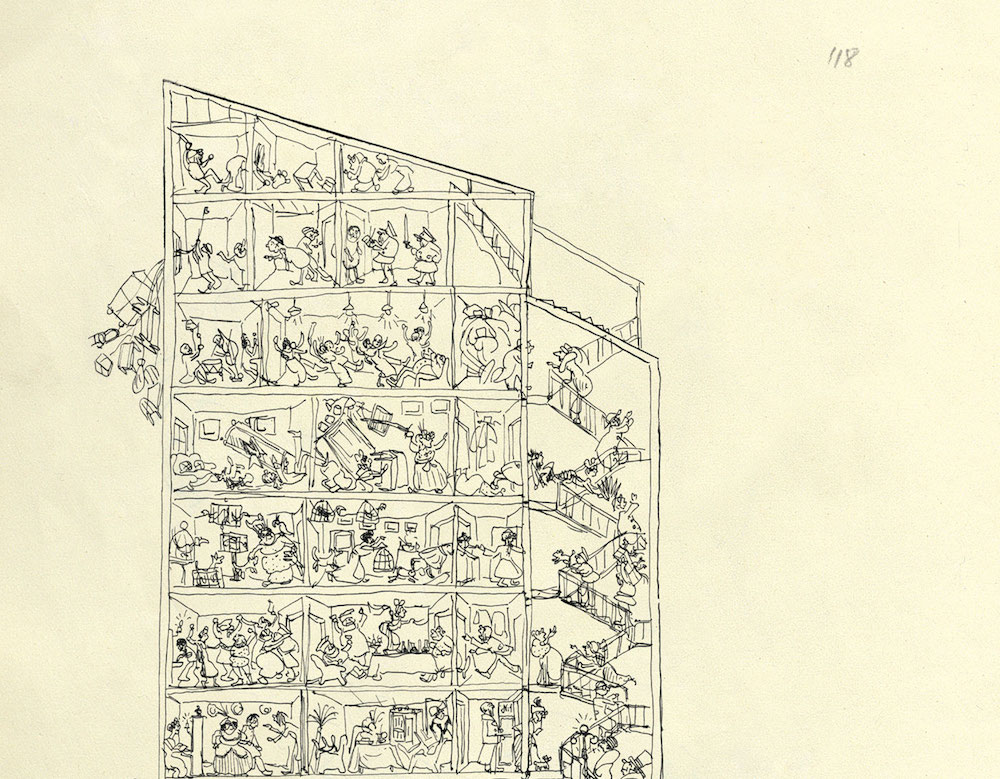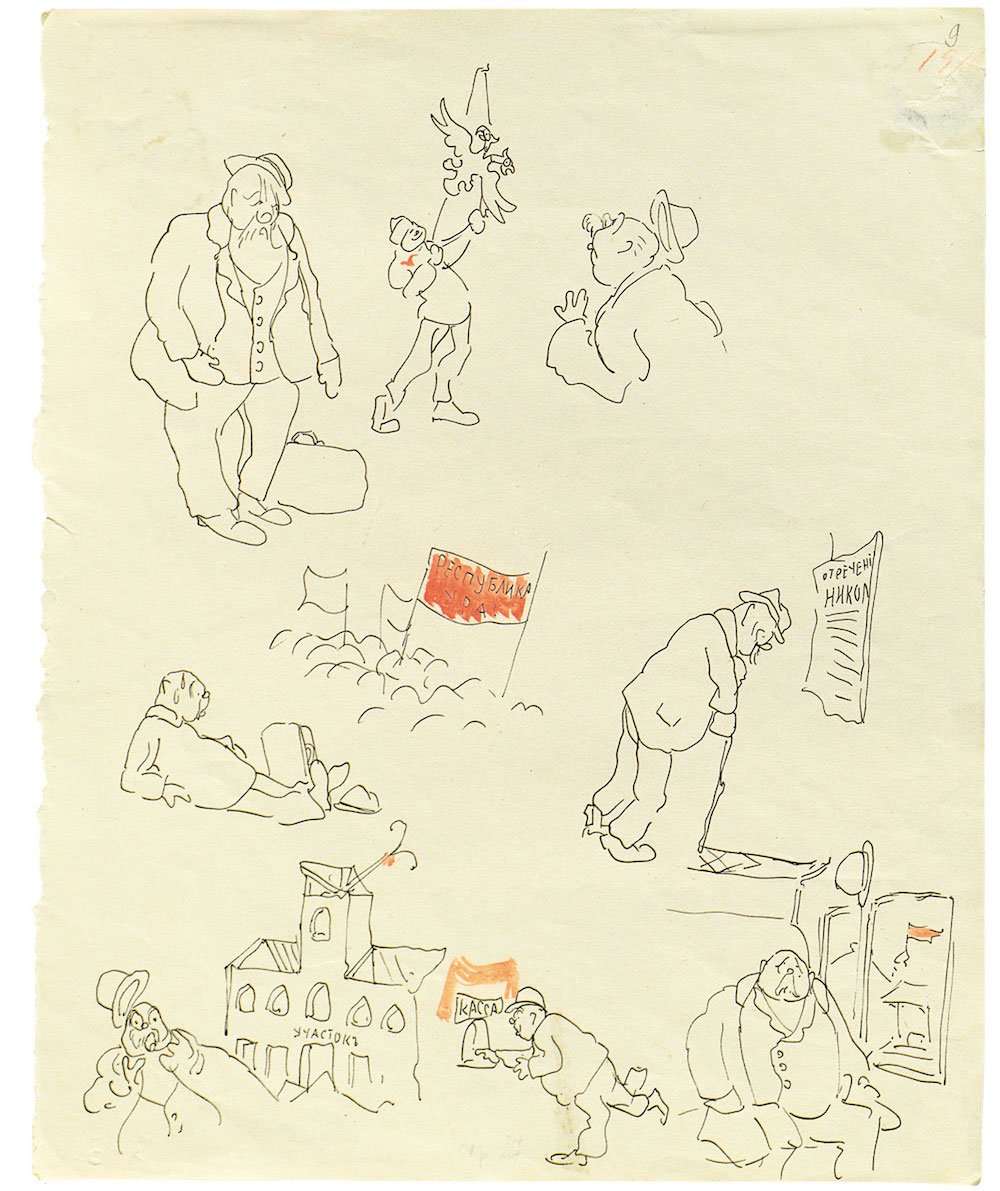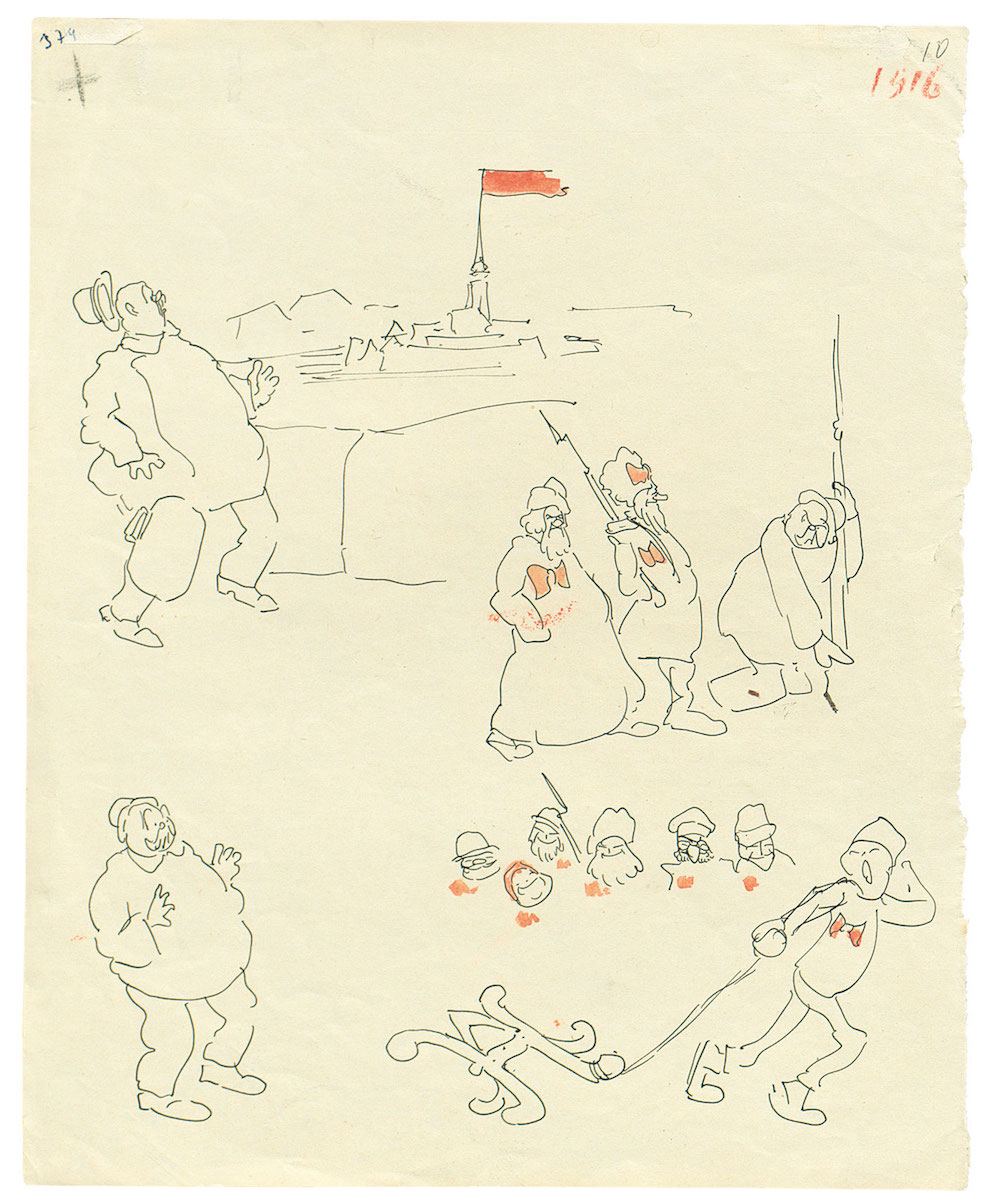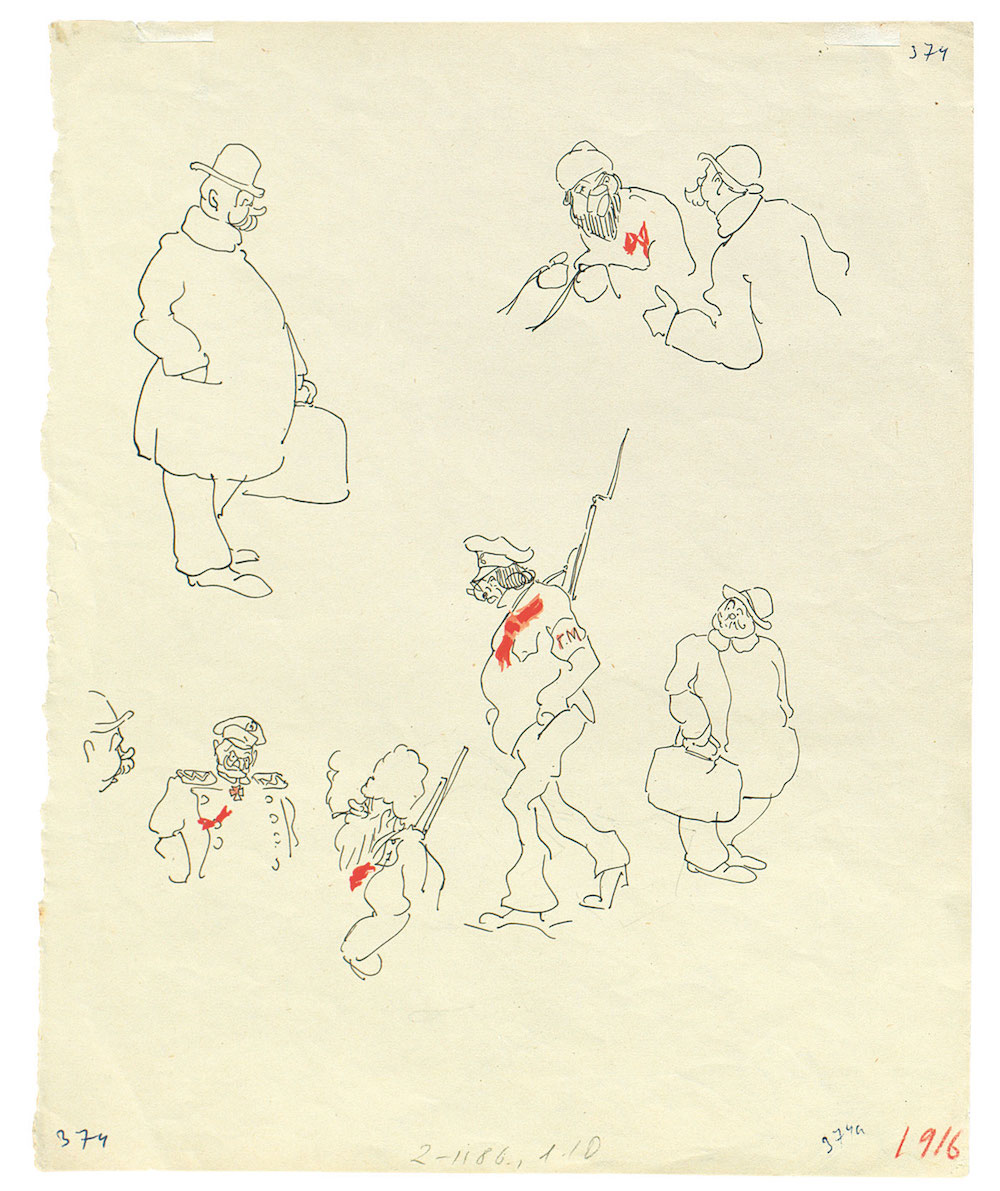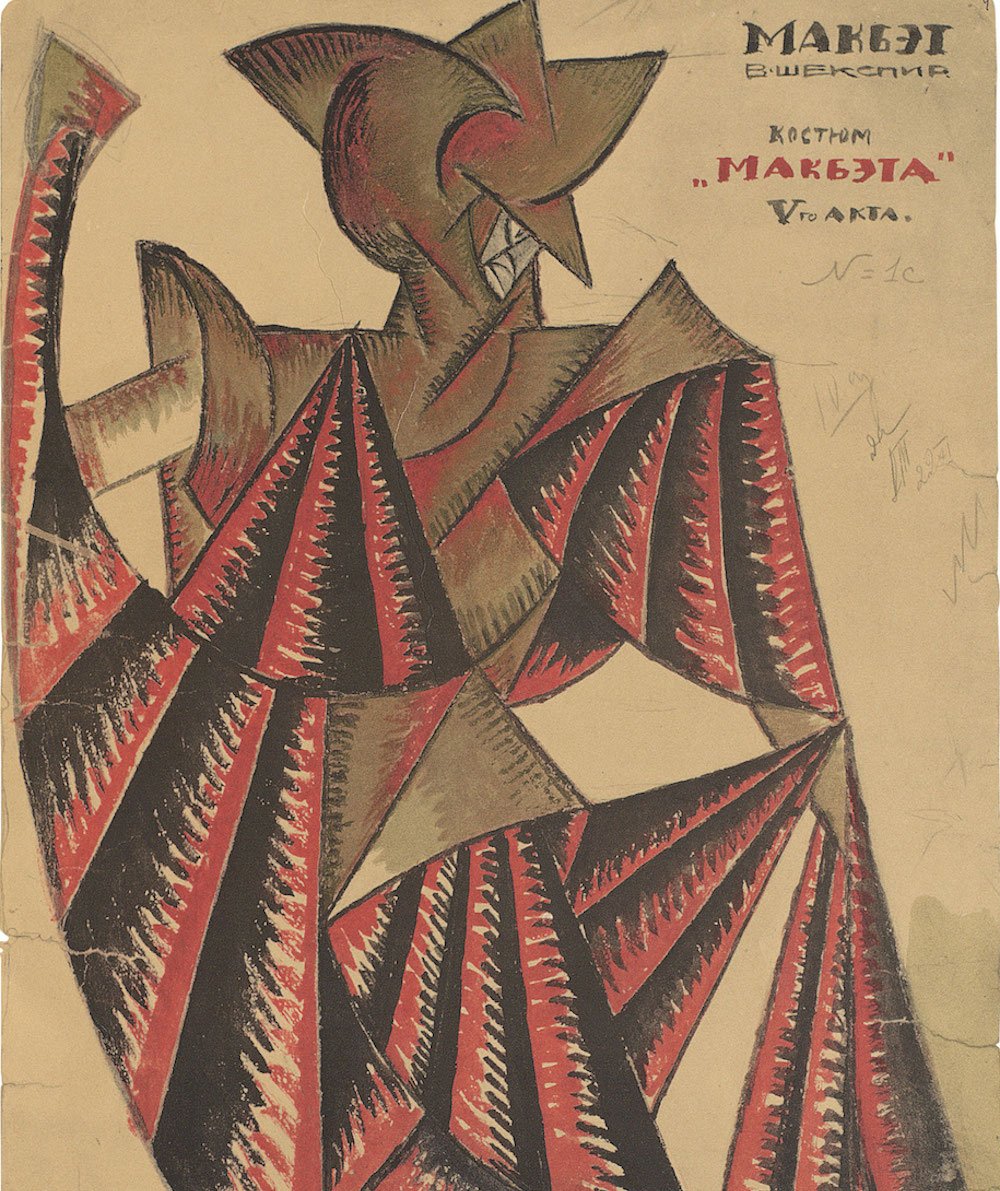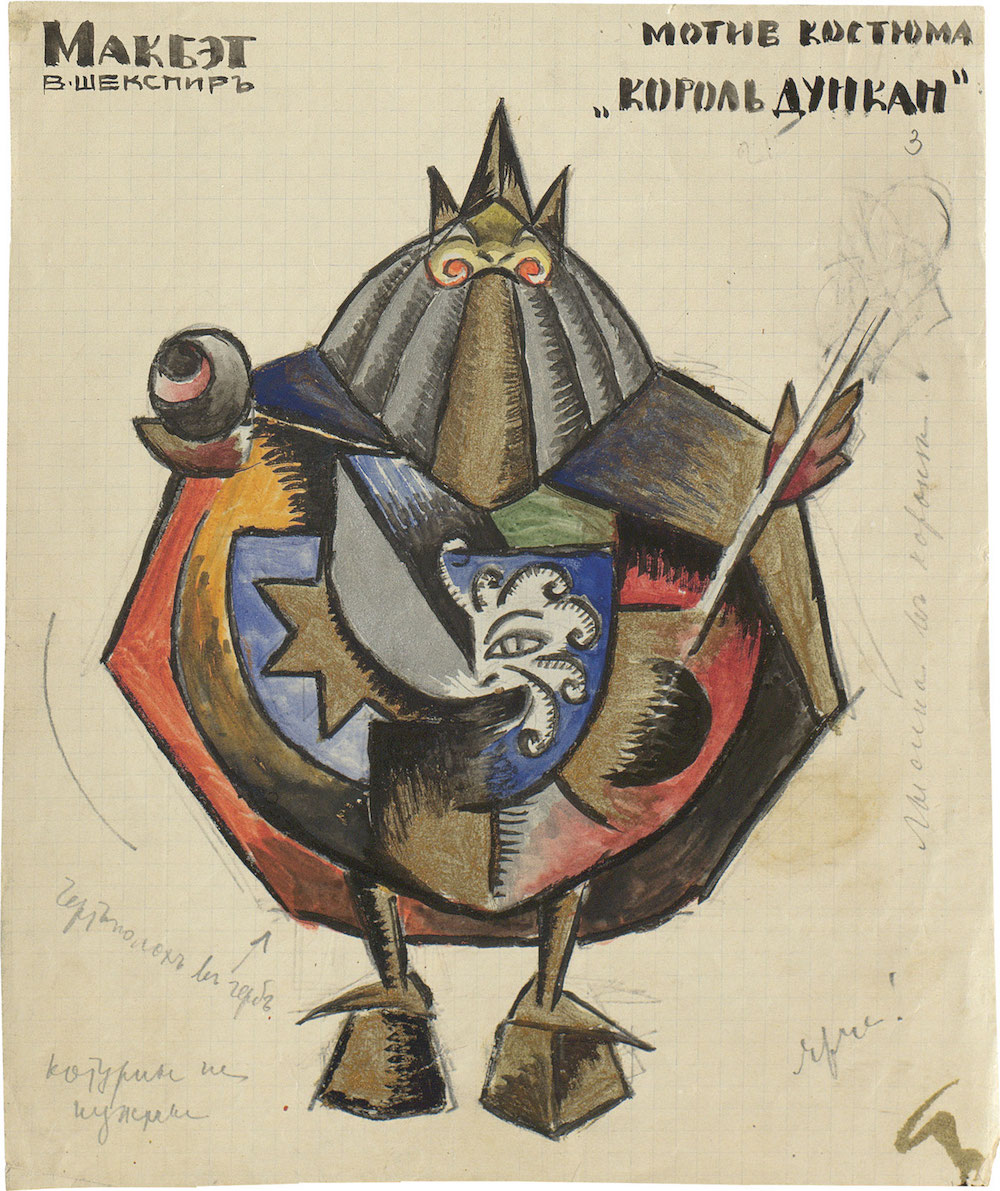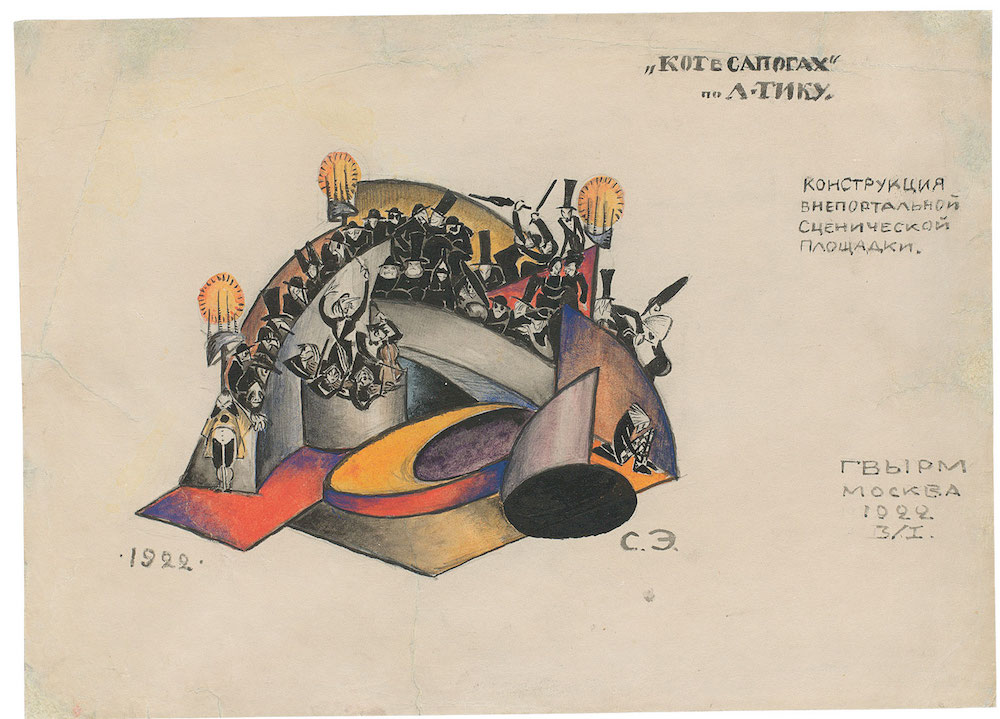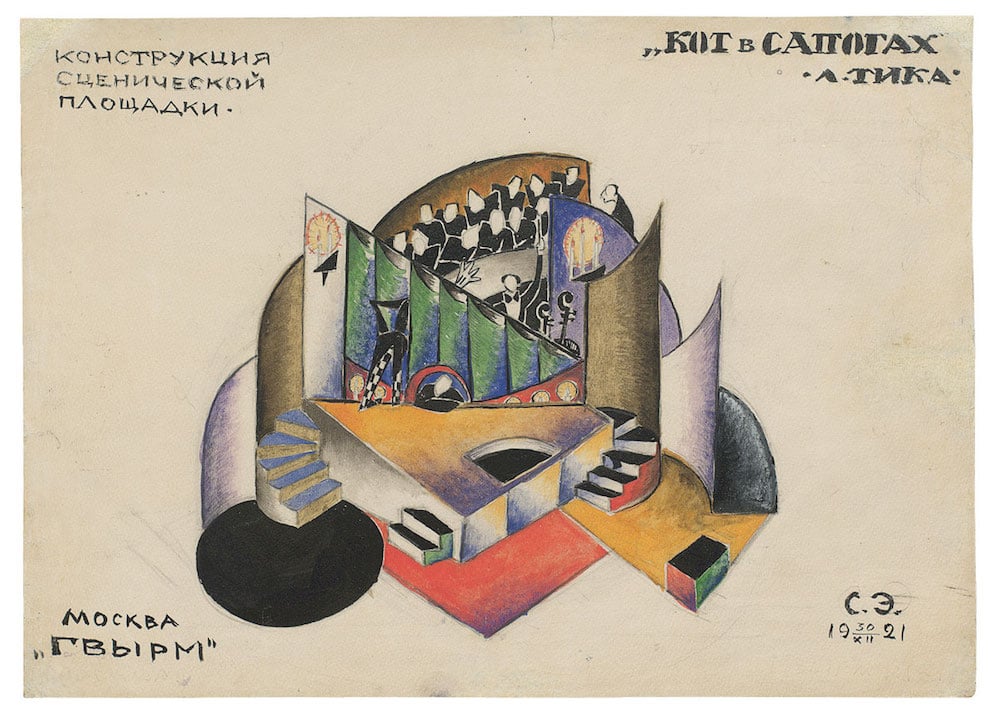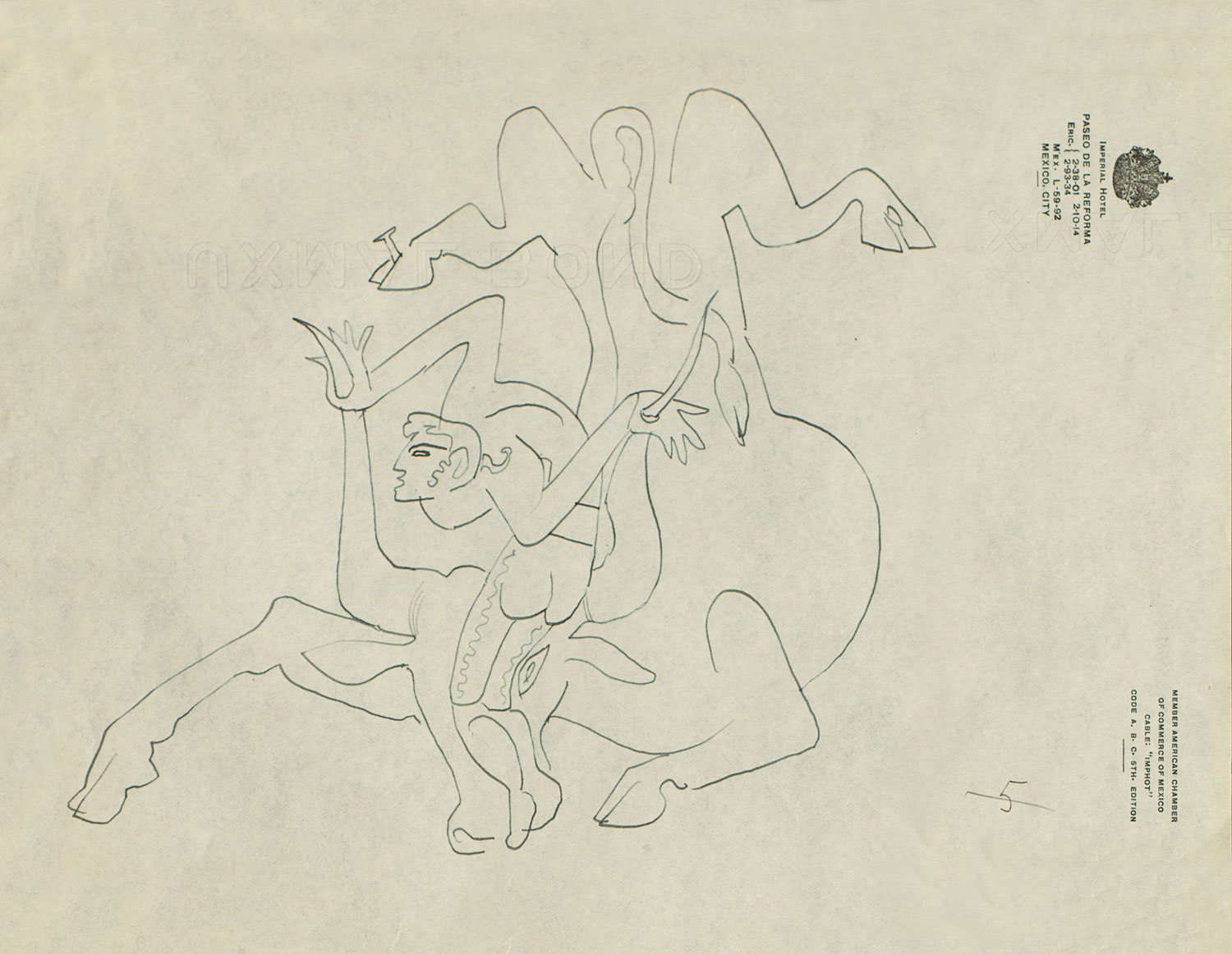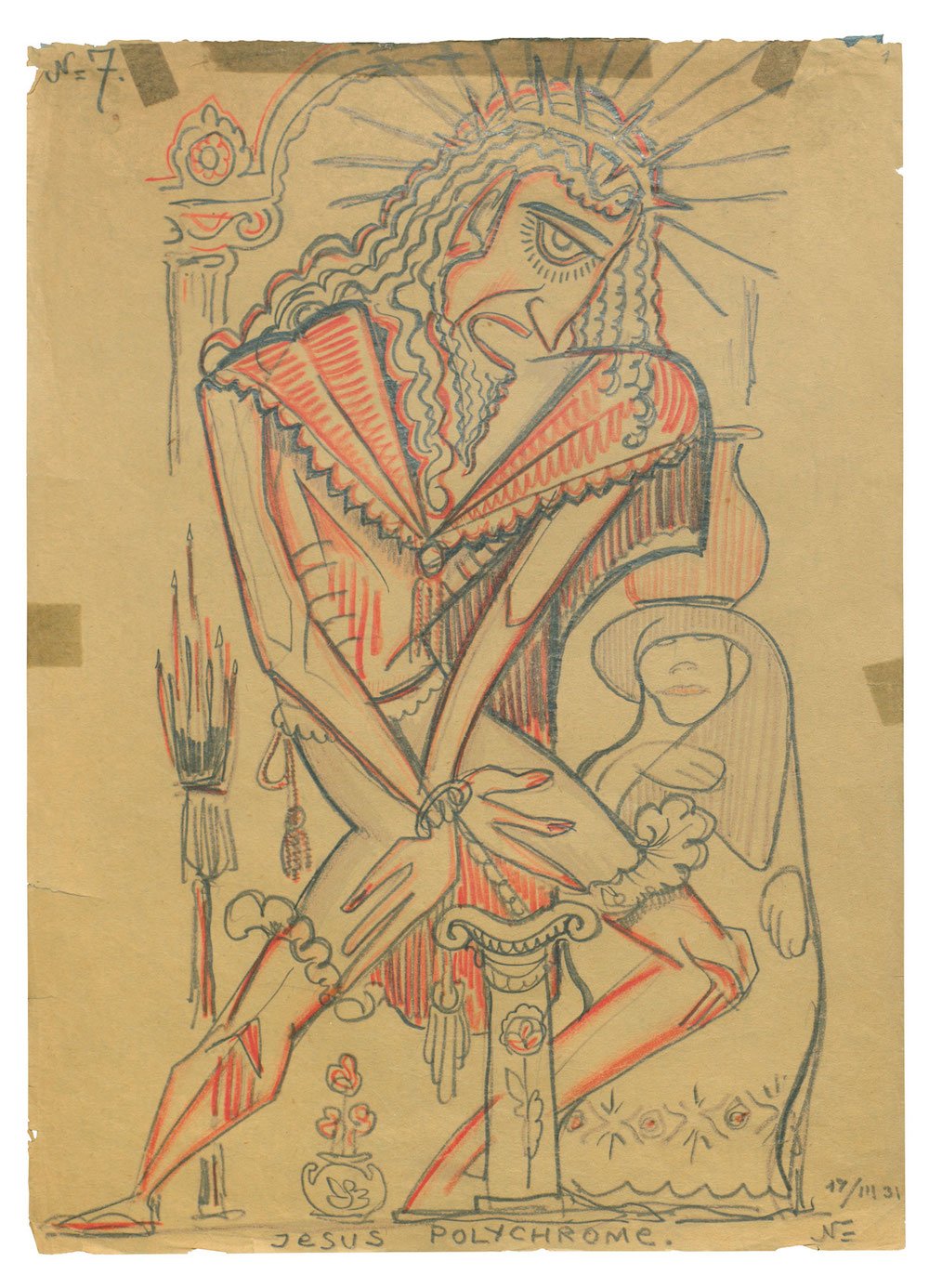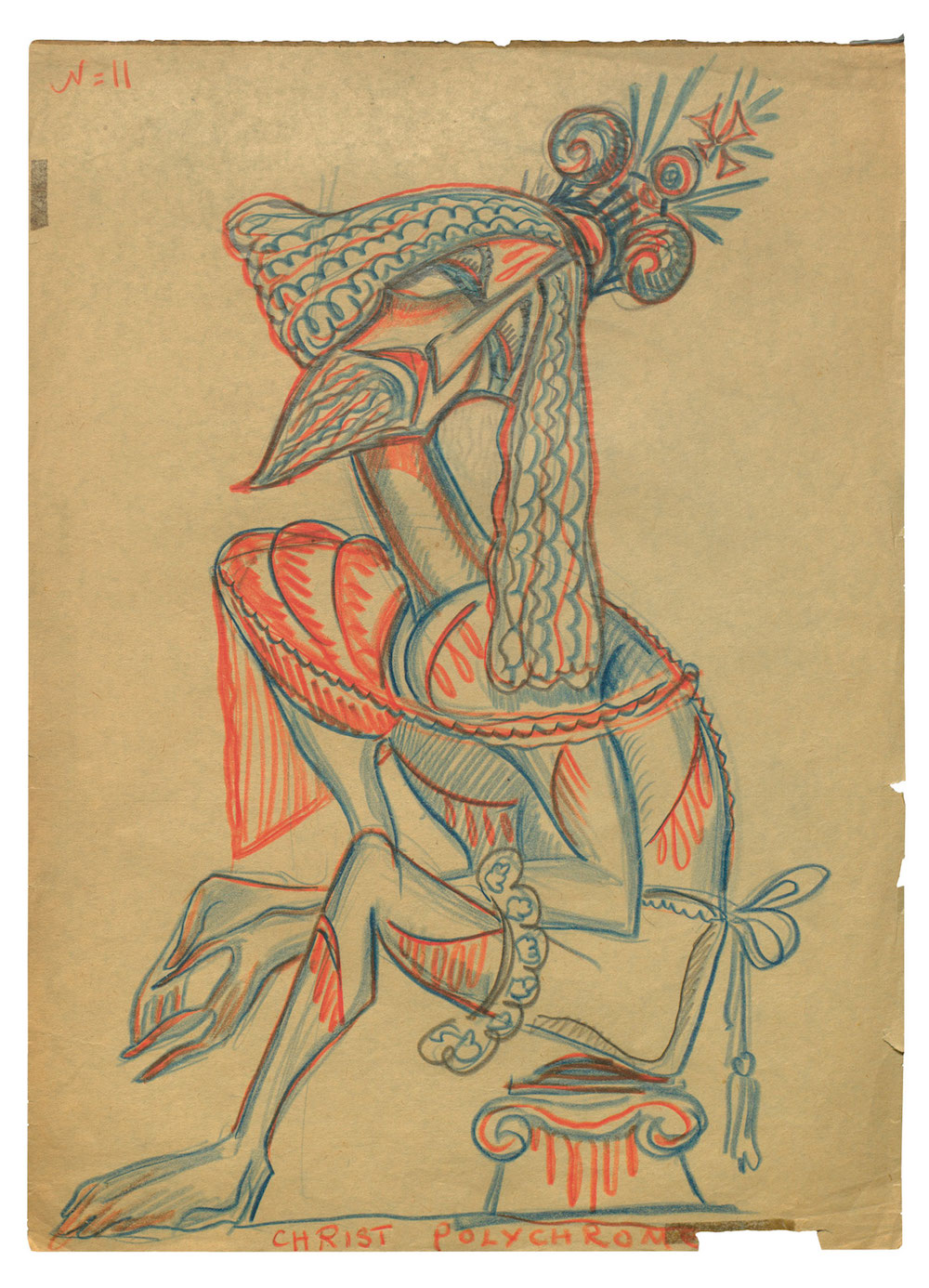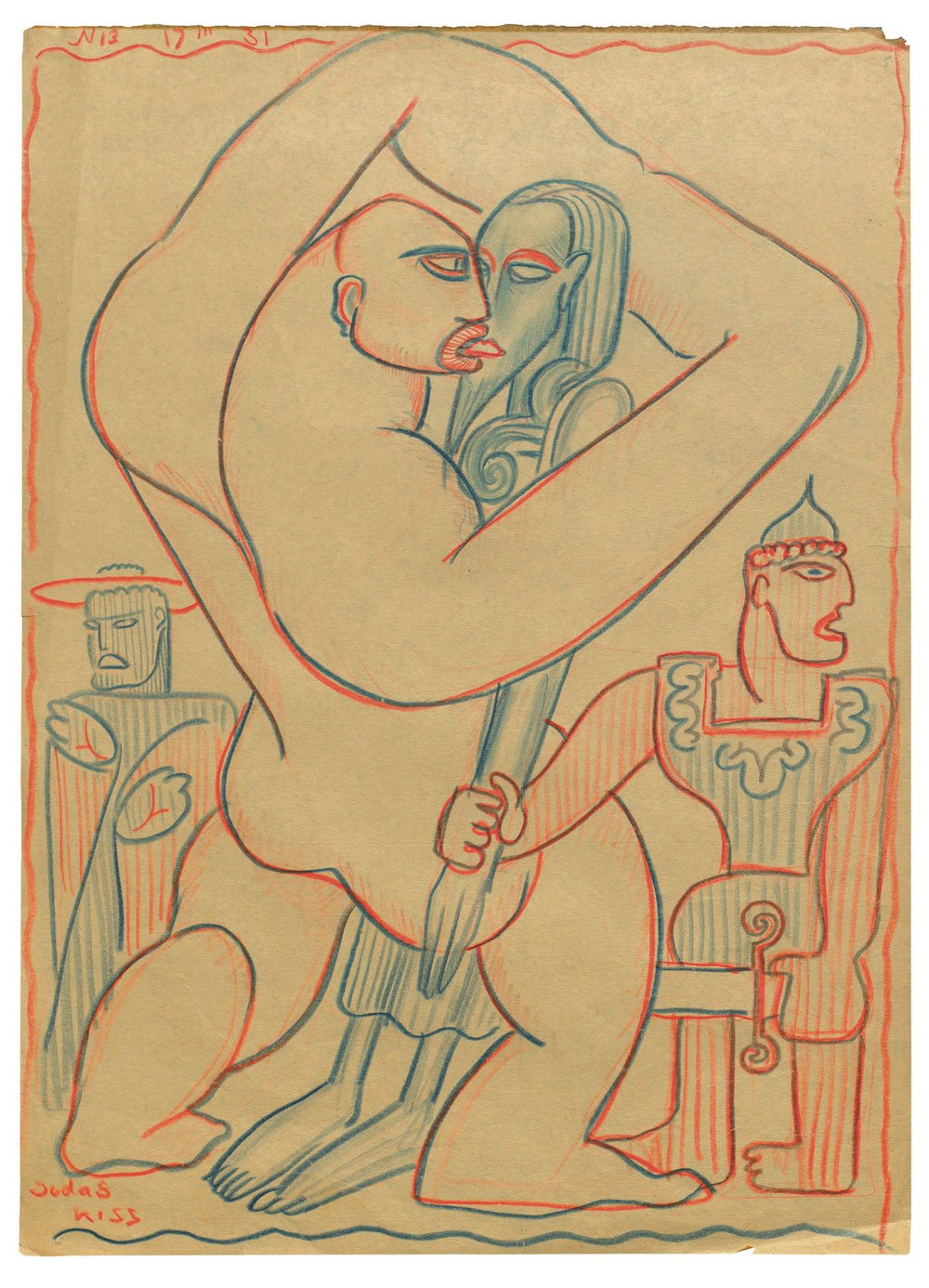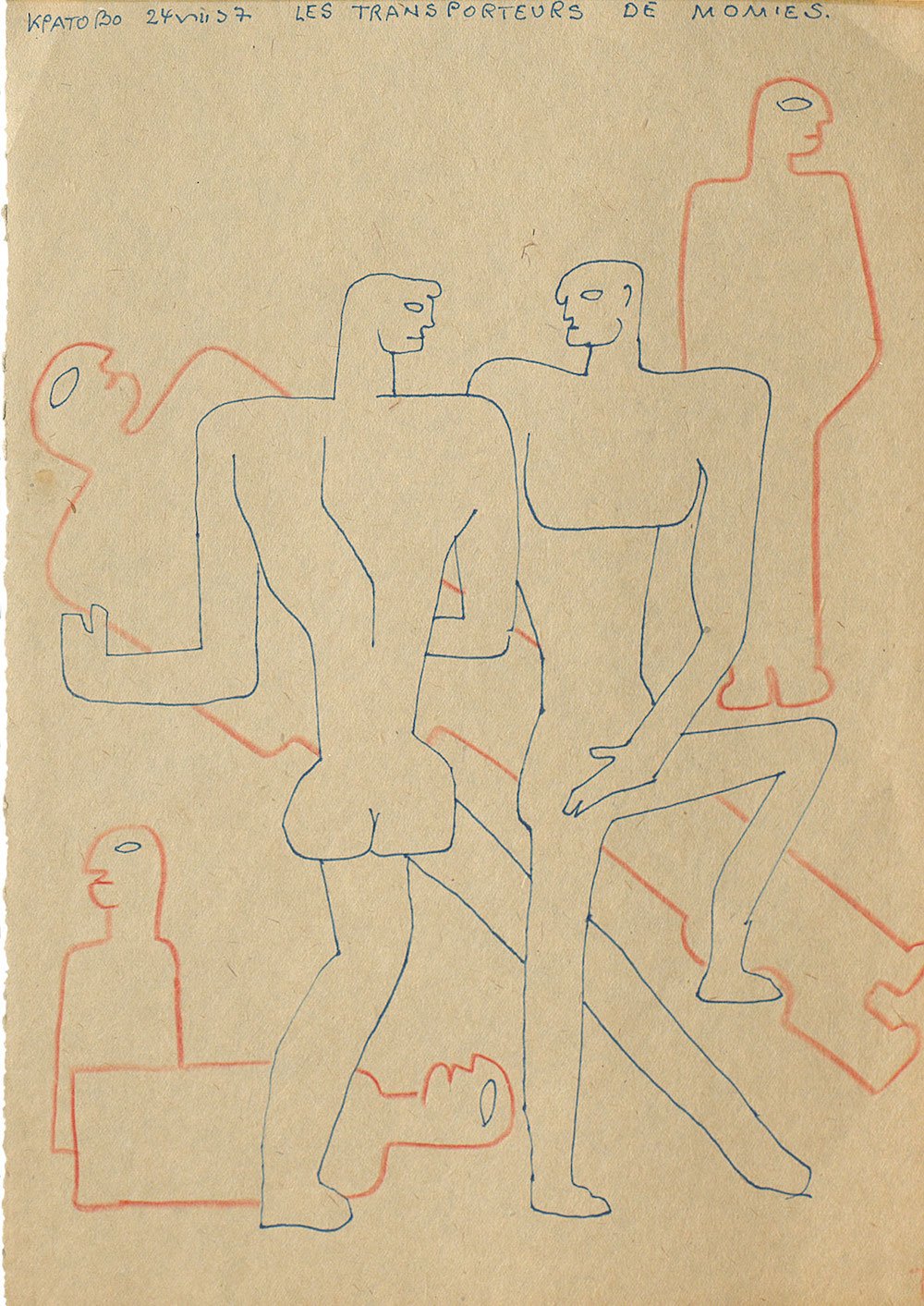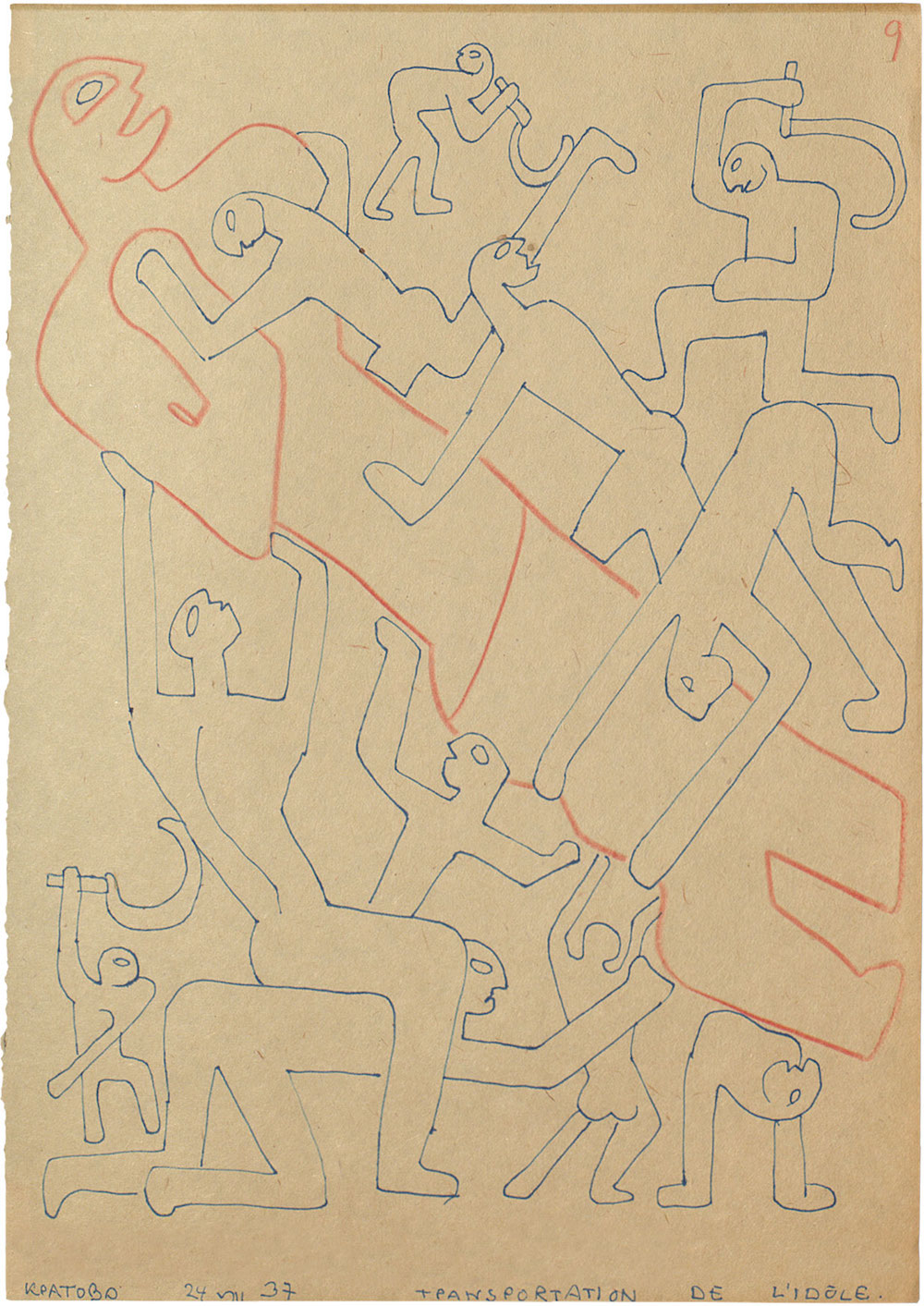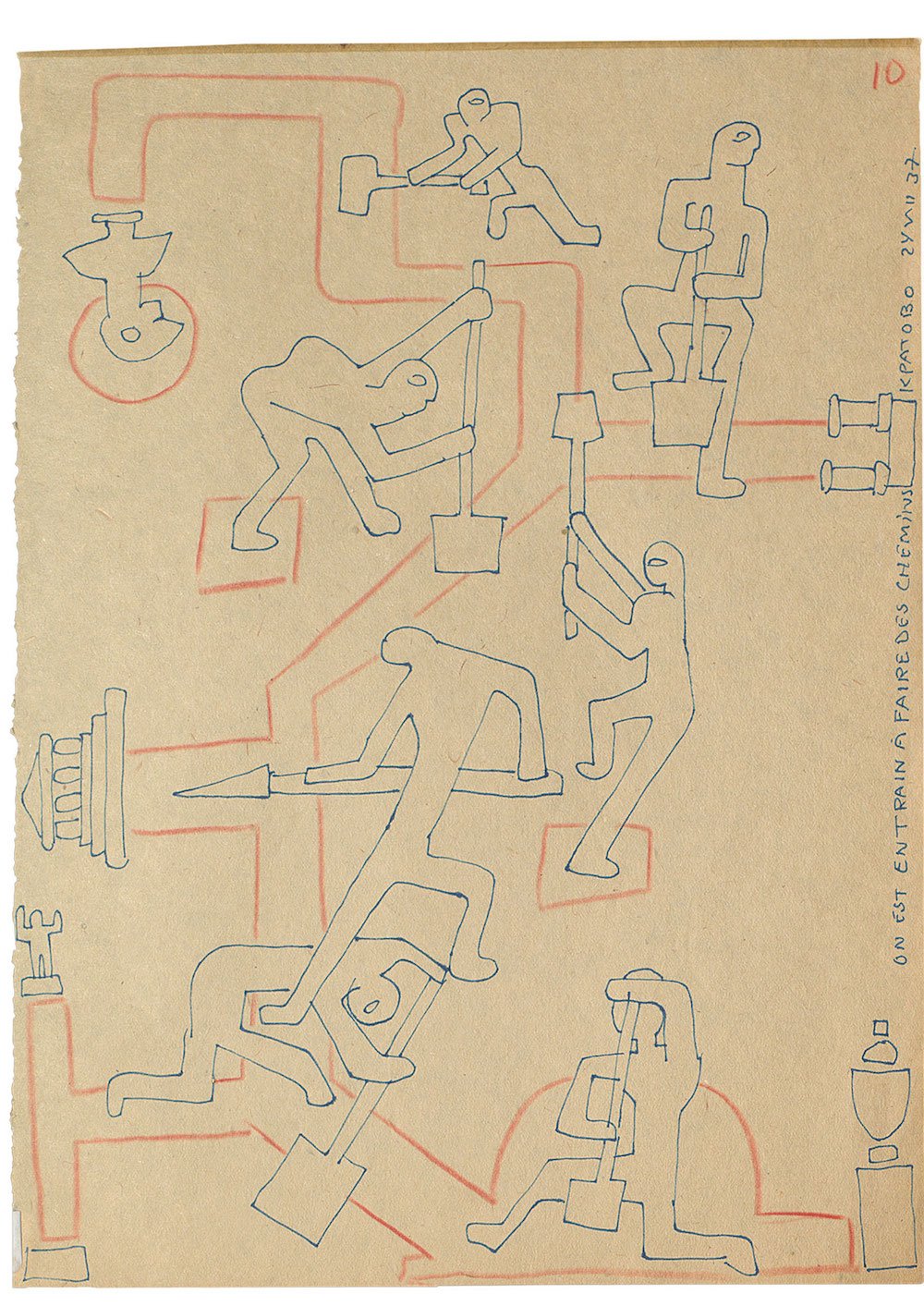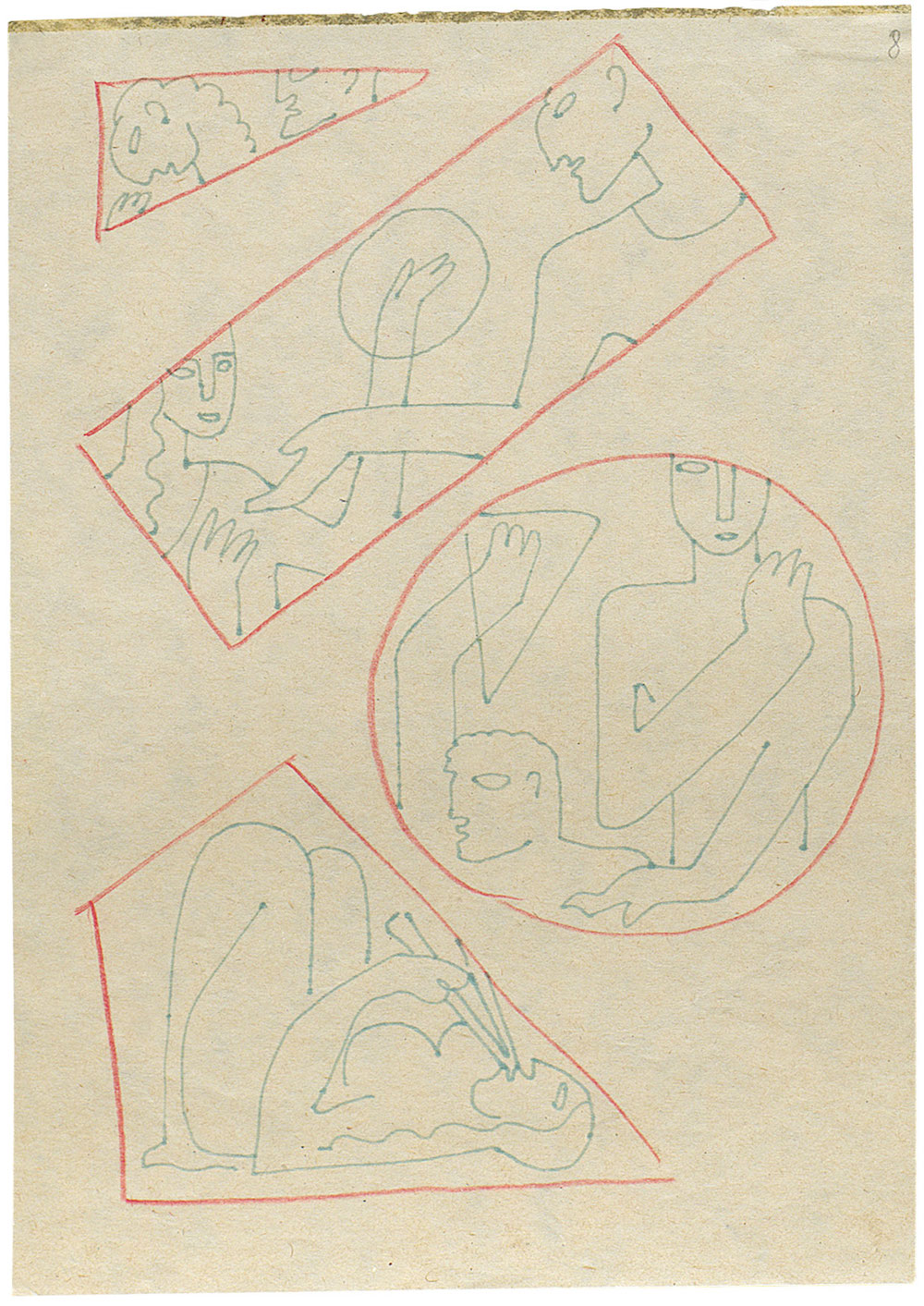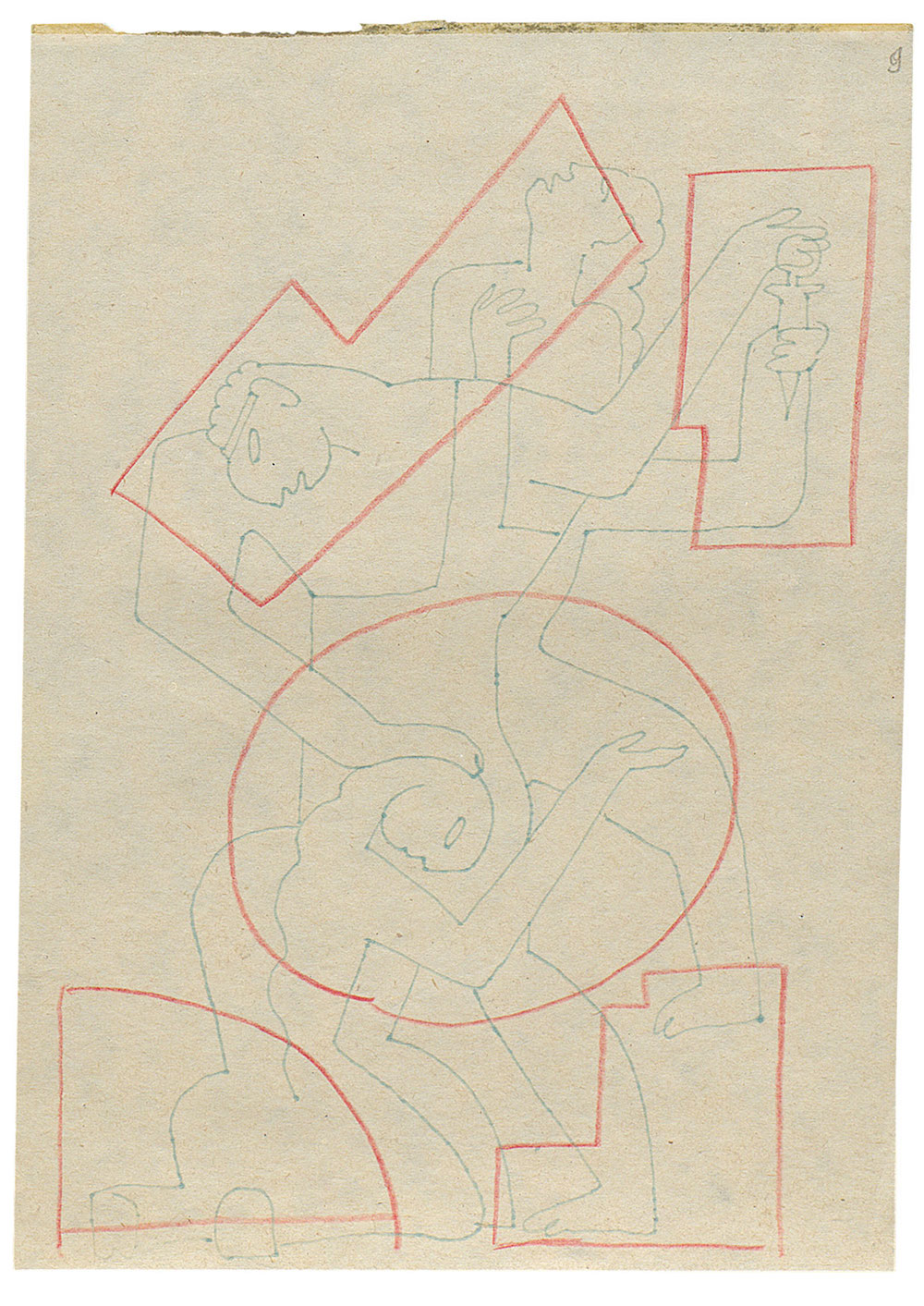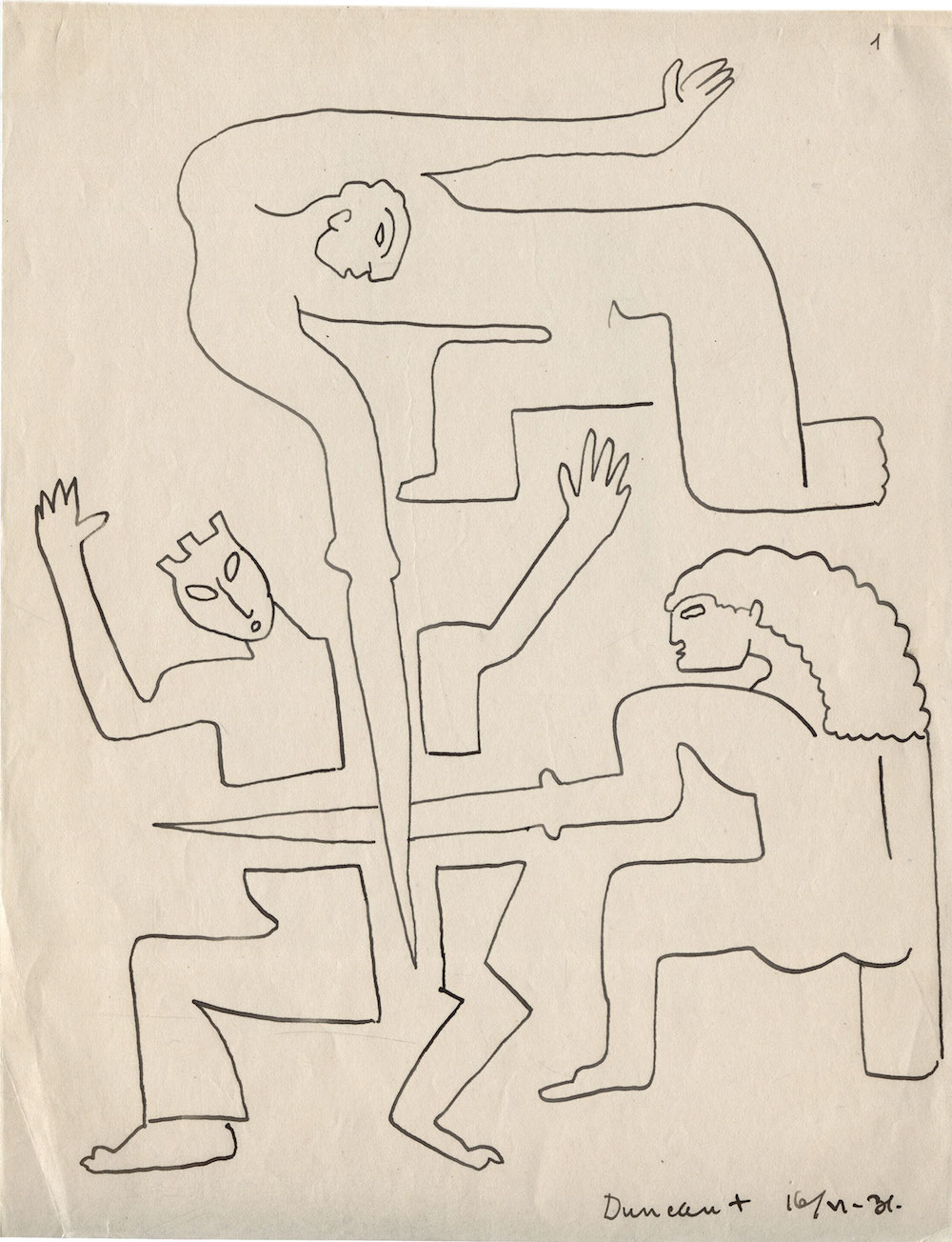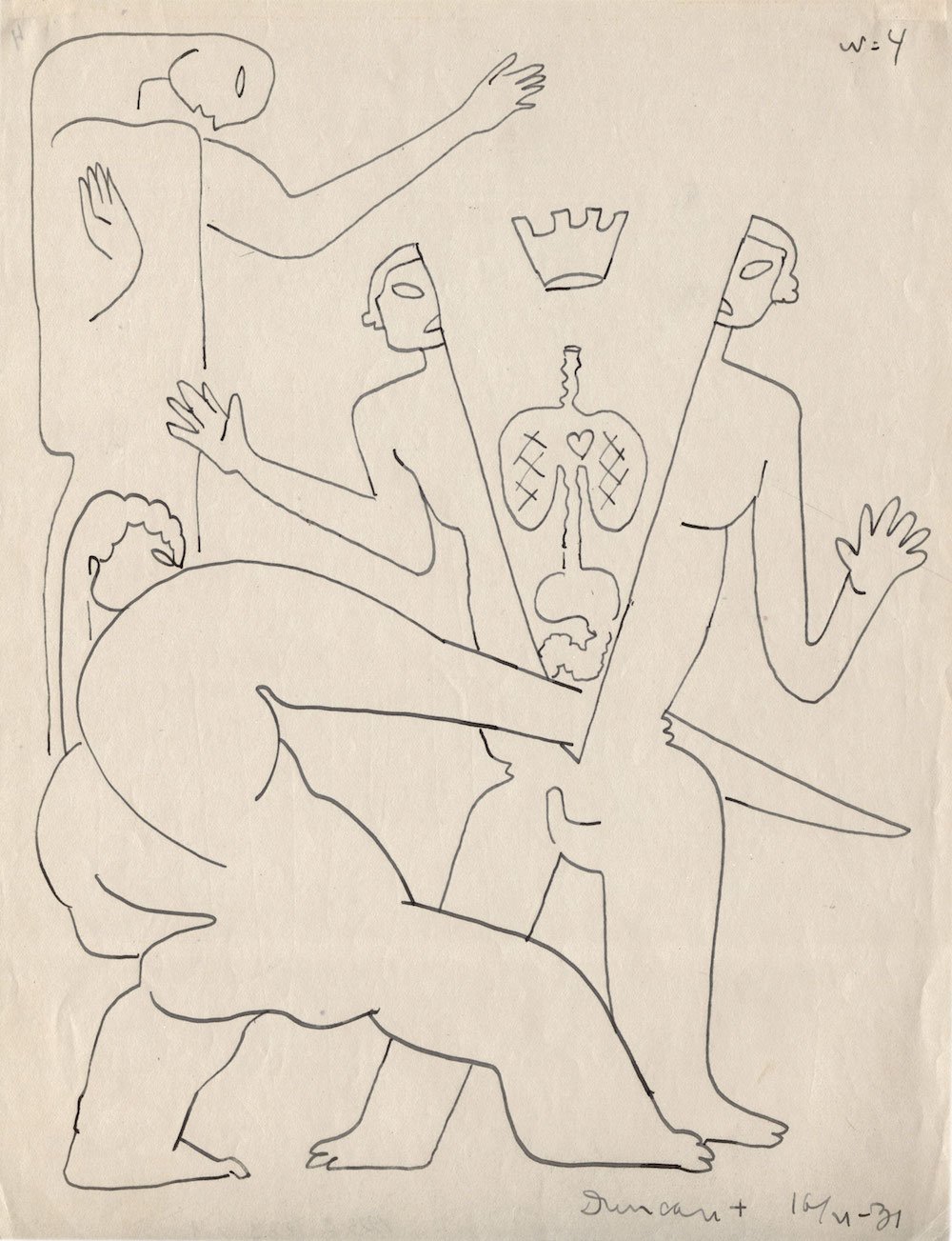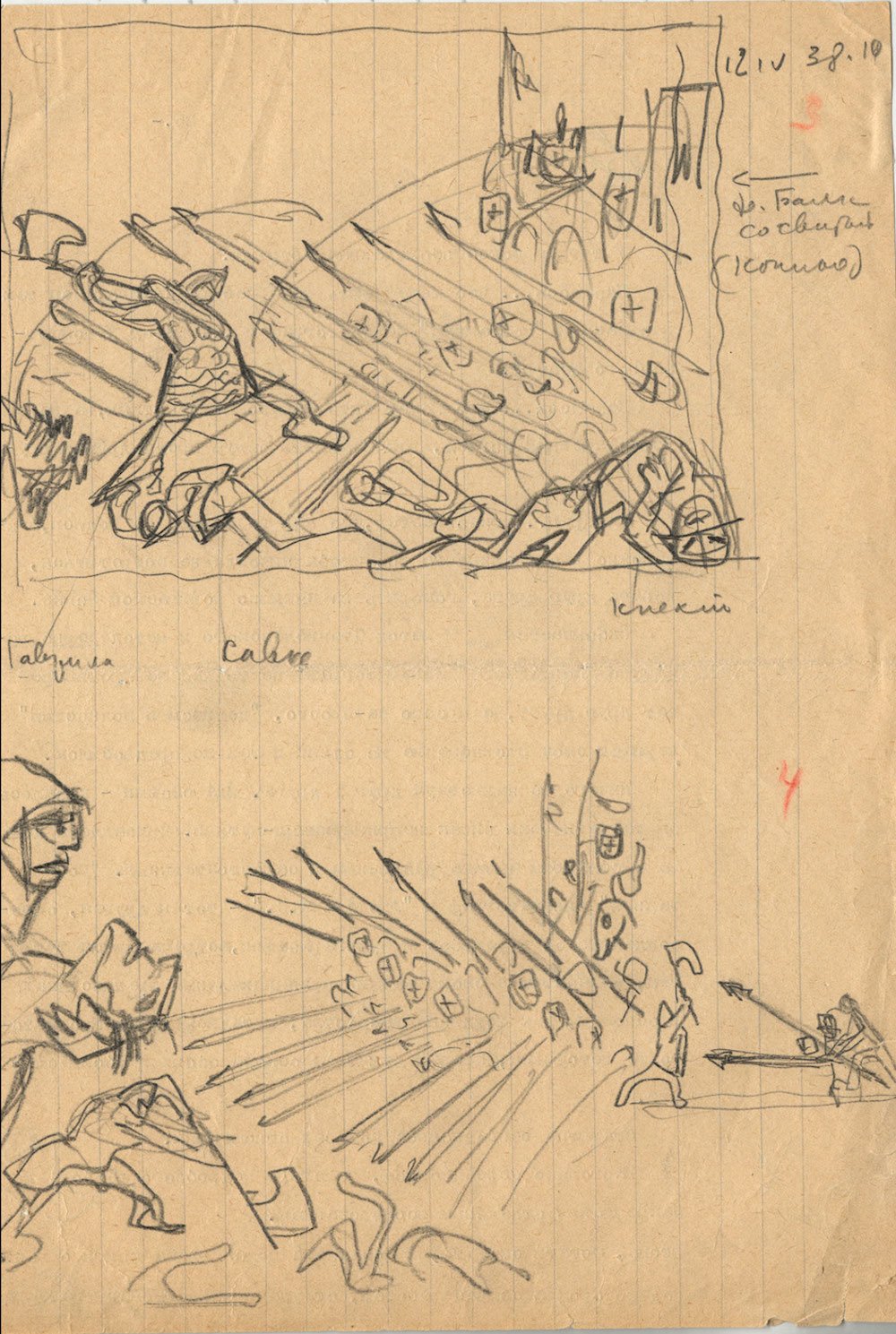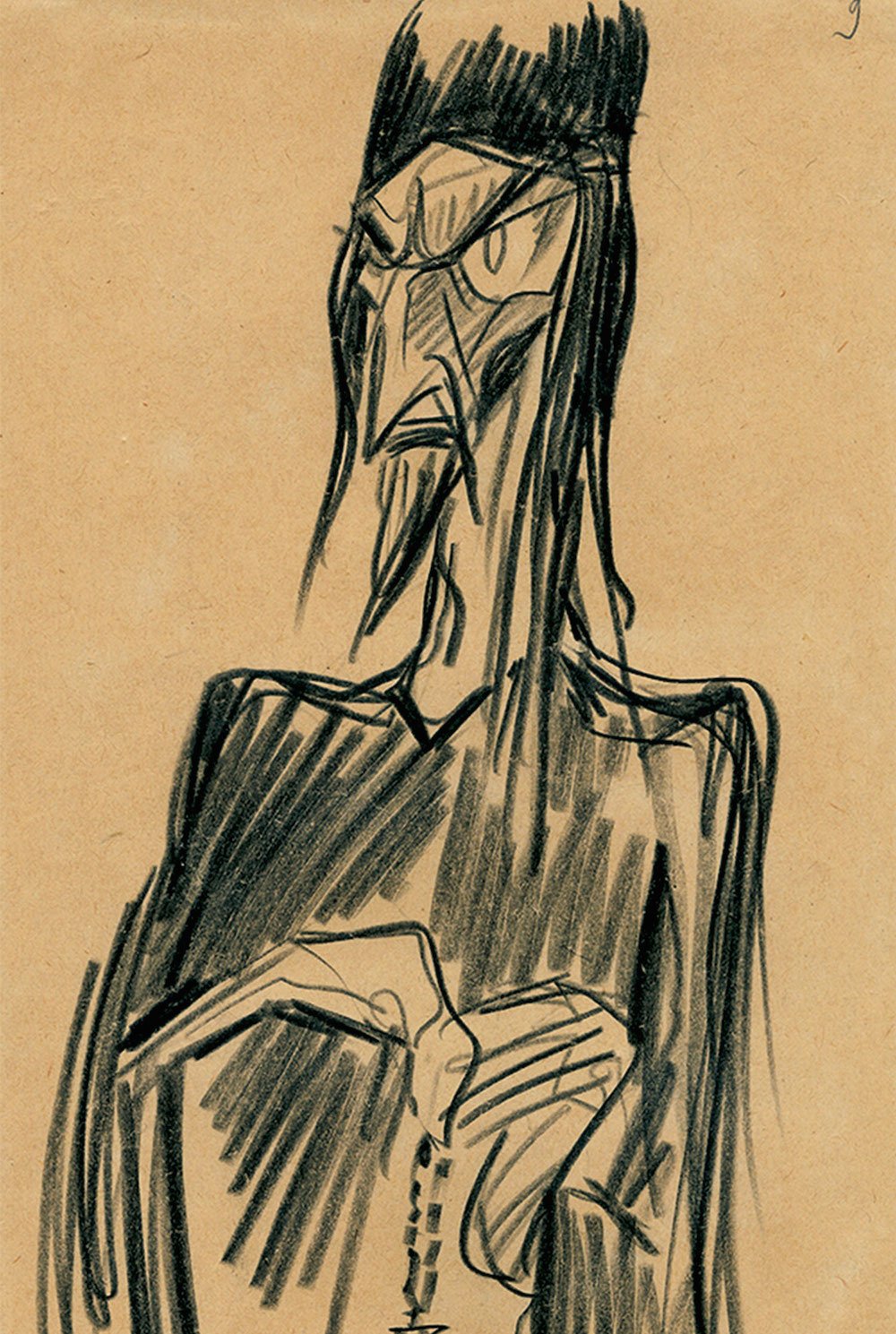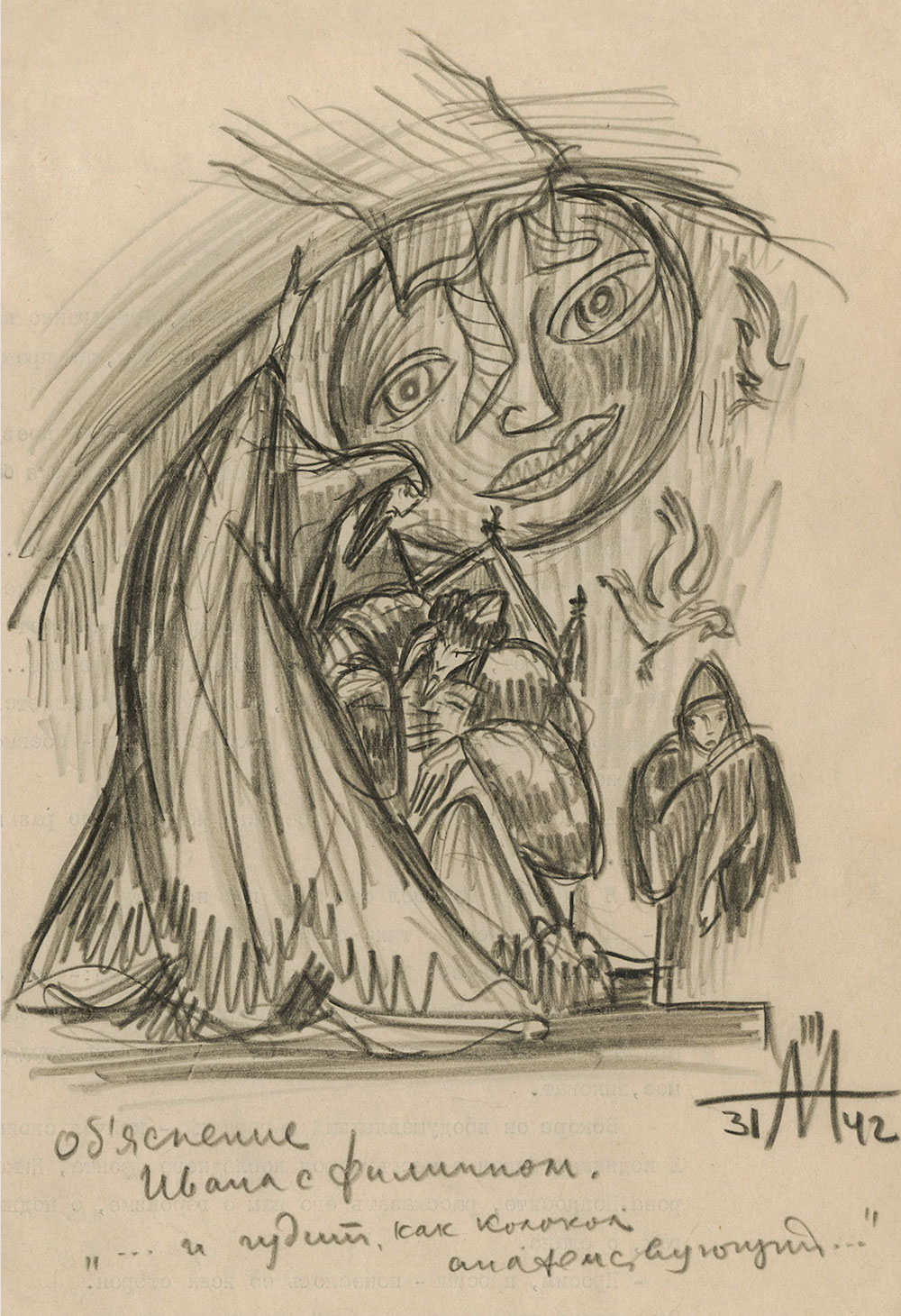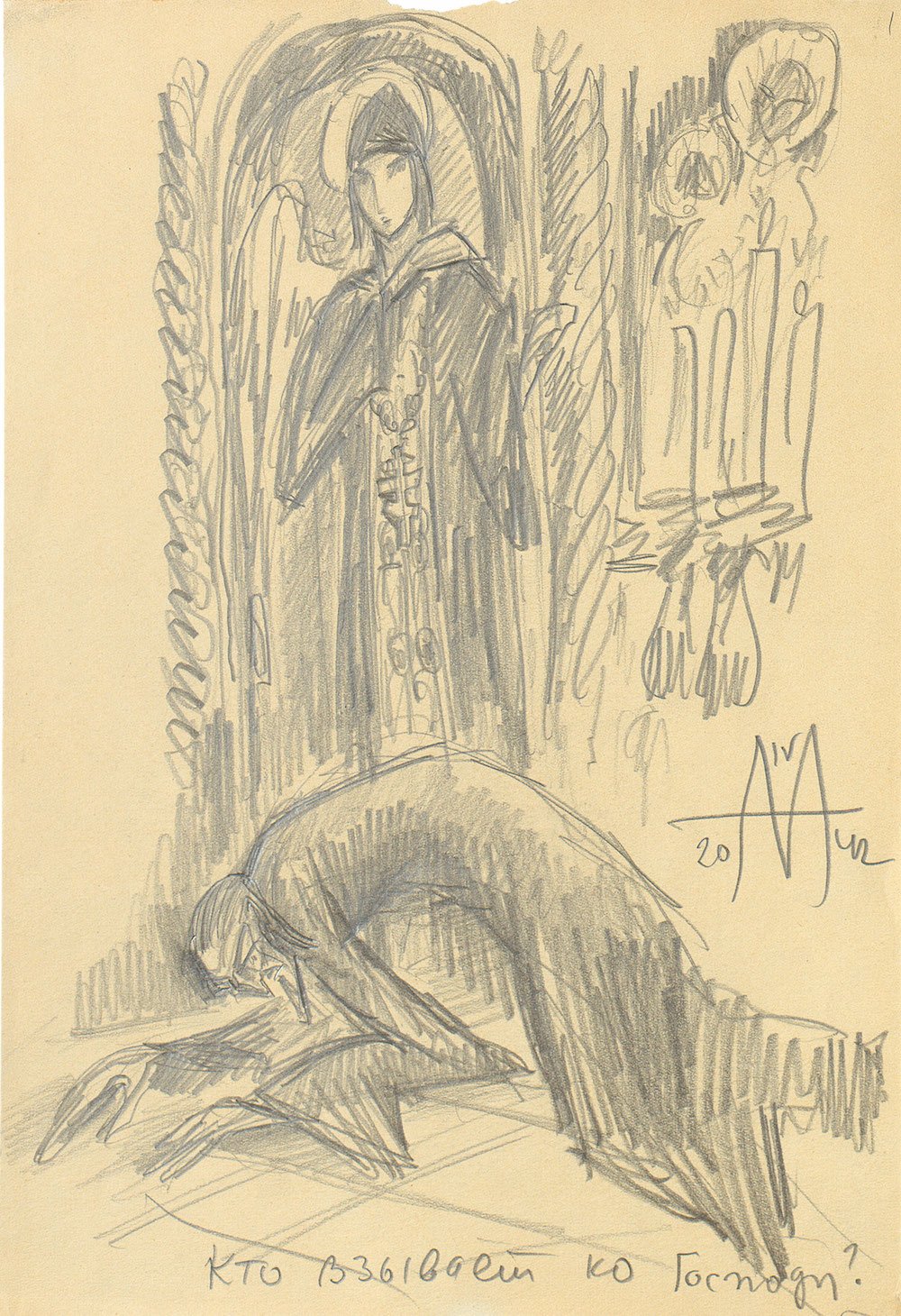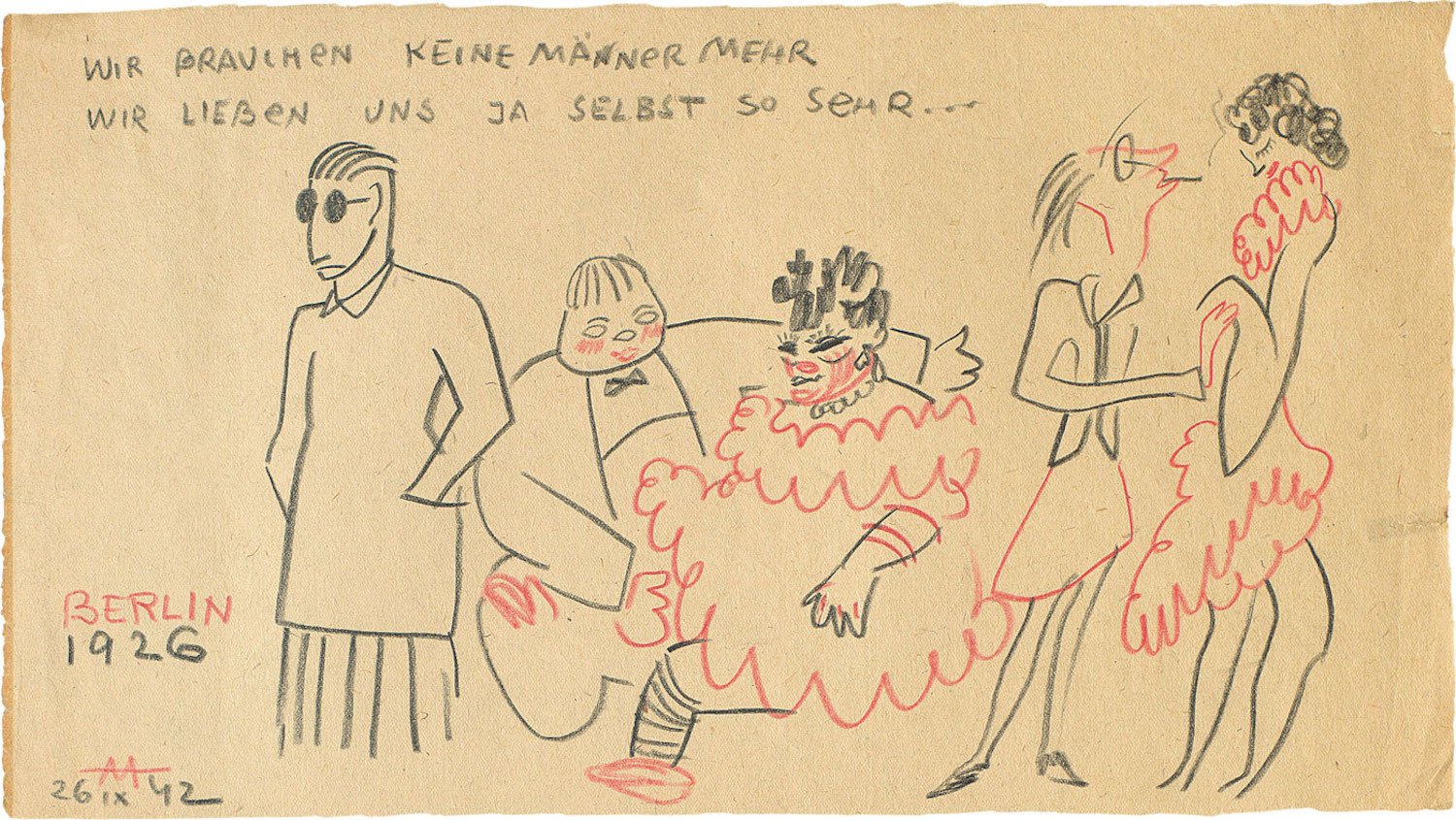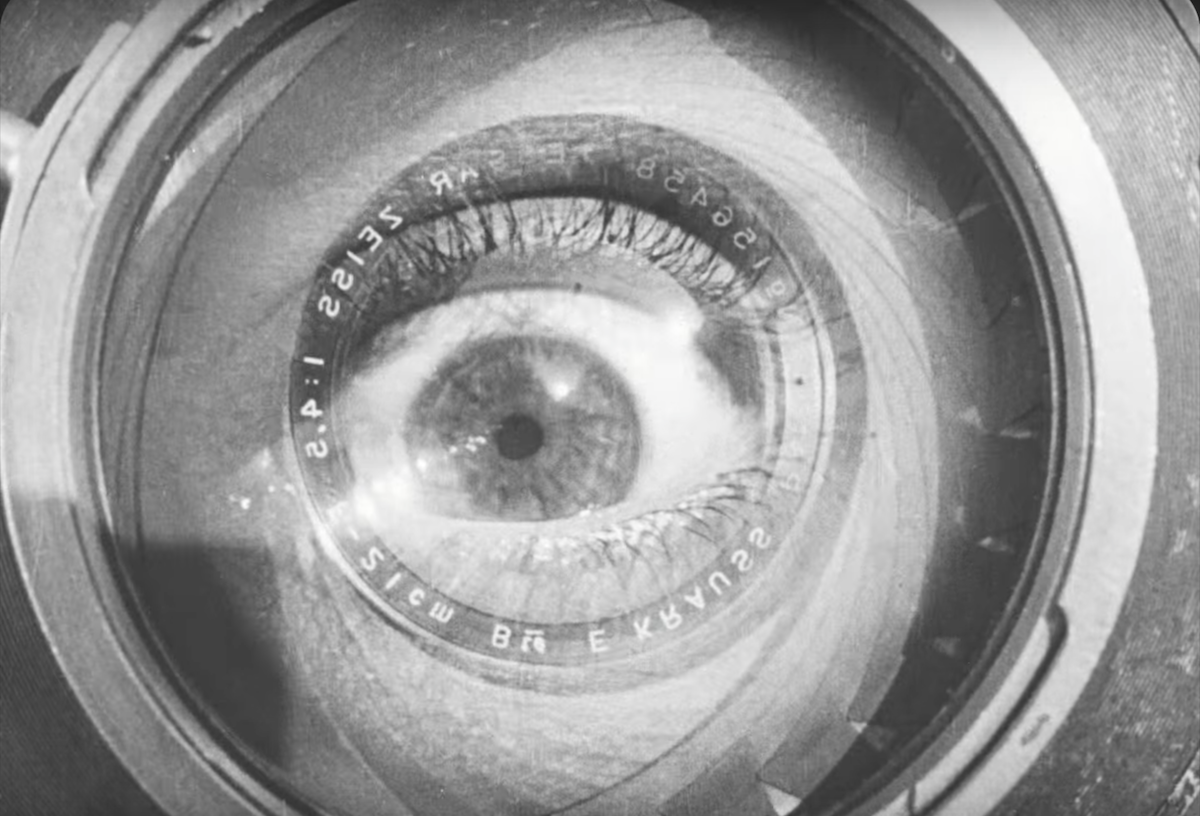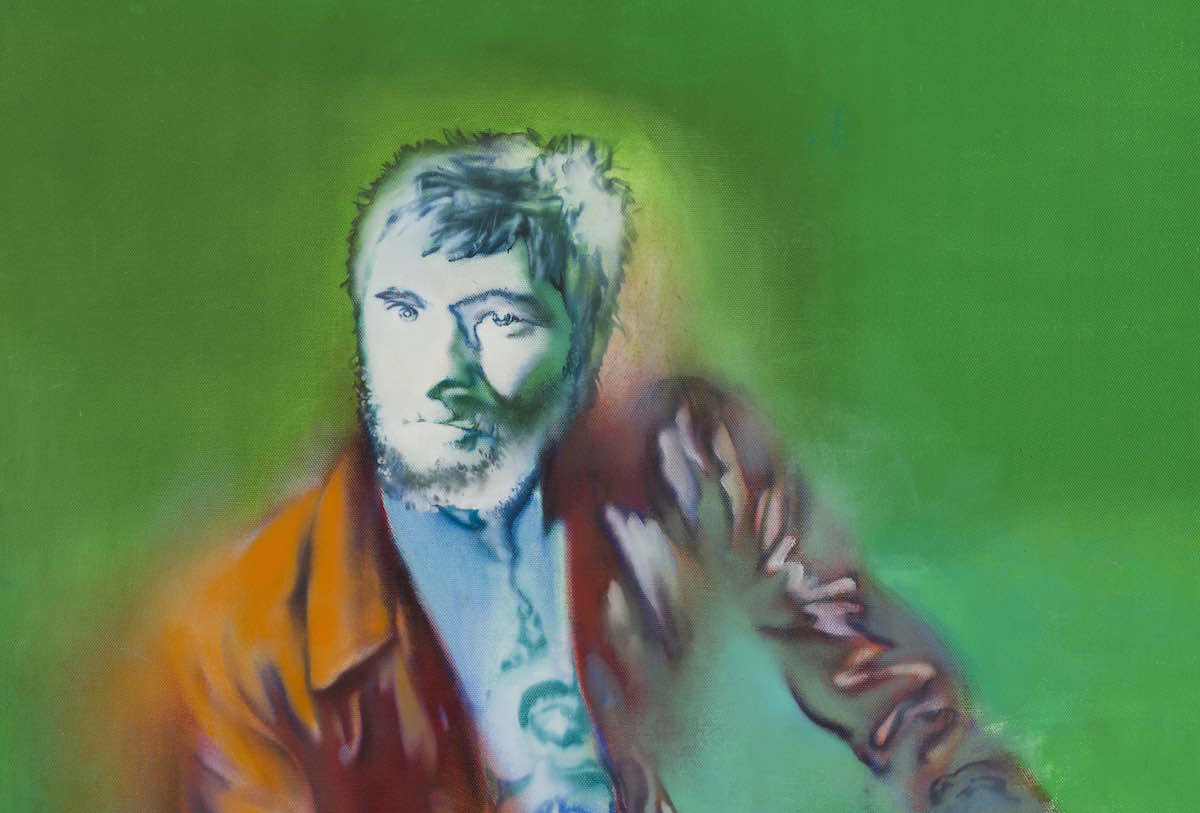Eisenstein on paper: explore the remarkable, unknown art of a cinematic maestro
One of the founding fathers of film was also a visionary artist, exploring urgent questions of sexuality and spirituality in Russia, Mexico, and beyond.
“When I was young,” Martin Scorsese writes in his foreword to Eisenstein on Paper: Graphic Works by the Master of Film, “Sergei Eisenstein was one of the only filmmakers (along with Chaplin) revered by the serious intellectuals who decided what was and wasn’t great art, and you would see his name mentioned alongside Joyce and Picasso and O’Neill and Stravinsky.” Eisenstein has been a cinéphile staple for 90 years thanks to works like The Battleship Potemkin (1925) and Ivan the Terrible (1944). But he was also a striking and prolific graphic artist; while only seven feature films were released in his lifetime, Eisenstein produced thousands of sketches, costume and stage designs, caricatures, erotic fantasies and more, from adolescence until his death at the age of 50.
Eisenstein on Paper marks the most thorough attempt yet to highlight the maestro’s graphic output. Ahead of the book’s release, I spoke to Naum Kleiman, former president of the Moscow Central Film Museum and guardian of the Eisenstein Estate, who wrote the text for the book and has spent decades arguing for the director’s art to be considered on its own terms alongside his cinema. In Scorsese’s words, Eisenstein possessed “a graphic force so powerful that it seemed almost otherworldly”; a force now laid bare like never before.
“This wasn’t a hobby for him,” Kleiman says. “It was a sphere of his creativity, in my view on a level with his cinematography, theory and teaching.” From the collections of the Russian State Archive for Literature and Art (RGALI), Kleiman has constructed a chronological history of Eisenstein’s art.
“Like all children, he drew,” Kleiman continues. “When he was 14, he suddenly understood how one could, with a single line, create objects and relationships. From then until 1917 he drew hundreds of pages. He even drew what we would call comics.” In these earliest efforts, such as The boyars in modern Russia and The House (both 1914), we see Eisenstein’s knack for caricature and visual humour — traits that would serve him well in his forceful silent films, like Strike (1925).
“This wasn’t a hobby for him. It was a sphere of his creativity on a level with his cinematography, theory and teaching”
After moving to Petrograd to study at the architectural faculty during the First World War, and then to Moscow in 1920 to work in theatre, Eisenstein underwent a breakneck creative evolution. “He was around talented artists all the time,” Kleiman points out: from the Ballets Russes duo Alexandre Benois and Léon Bakst to Cubist pioneers like Aleksandra Ekster and Leonid Vesnin. “He began to read about comedia dell’arte and medieval theatre. He drew scenographies for shows he had imagined in his head. He worked through different styles: Romantic, medieval, miniatures, he took them all in.” His Constructivist theatrical sketches from this period betray his fixation on period detail and an awareness of the body that would come to define his later graphic art.
Through the theatre, Eisenstein was exploring space, movement and perspective. Then something happened that saw him abandon drawing for almost eight years: he discovered cinema. “You might say it was a transfiguration,” says Kleiman. “He turned the line [of the drawing] into the frame. He was no longer working with a pencil or with ink or watercolour, but with light and the lens. From Strike to his work in Mexico — it’s a form of “cine-graphics”.”
After travelling in Europe and America, Eisenstein spent 1931 in Mexico, funded by the novelist Upton Sinclair, working on a feature titled ¡Que viva México!. Forced to return to Russia after Stalin questioned his loyalty and Sinclair pulled the plug, he never completed the film. But Mexico had a profound effect on Eisenstein: aesthetically, sexually, spiritually. “It was like an ecstatic reawakening for him,” says Kleiman. “The Mexican muralists had a great influence on him, as well as Mexican Baroque. The clean line comes back, and is joined by mythological, Christian and Antique themes. He combined his personal reawakening with a study of the history of culture.”
This “personal reawakening” included a brief affair with a Mexican man — Eisenstein was bisexual — and after the semi-abstraction of his theatrical work, his drawings in the 1930s return again and again to the body: distorted and contorted, mutilated and vibrant, somewhere between eroticism and violence in a manner clearly influenced by the Catholic and folk traditions he encountered abroad.
The Moscow Eisenstein returned to was not the one he had left. The repressive mechanism of Stalinism was ratcheting up — Eisenstein himself narrowly escaped serious trouble after his 1937 film Bezhin Meadow was suppressed before release — and his graphic art now took on a different style and role. He “dropped the Baroque,” in Kleiman’s words, and became “stricter; there was a wittiness in his drawings from the 30s. [During the Terror of the mid-30s] it was of course terrible to write with words. His drawings became his confessional.” In series like Idolatry and Stained-glass windows, we see a pared-down figuration that plays with ideas of dehumanisation and anonymity.
This was also the period of Eisenstein’s last creative flourish. After the Bezhin Meadow fiasco, the director worked on two final projects, both direct commissions from Stalin himself: Alexander Nevsky (1938) and Ivan the Terrible (eventually released in two parts, 1944 and 1956). These grand historical dramas, required to promote nationalistic sentiment and the image of the strong leader, saw Eisenstein explore sound film for the first time, as well as expressionistic mise en scène and an attention to psychological profile. And he began to use his drawings as part of his cinema, imagining scenes ahead of filming, working out characterisation through sketches.
For Kleiman, this shift was a result of the medieval settings of the new films. “With Nevsky, in his designs, he suddenly turned from clean, contoured lines to a world of shading and depth — it became more like a fresco. And Ivan the Terrible is absolutely an expressionist tragedy.” Eisenstein made the Ivan films in Almaty, Kazakhstan, where the Soviet film industry was evacuated during the Second World War. In his Introduction to Eisenstein on Paper, the film scholar Ian Christie suggests that this distance and isolation allowed him to “immerse himself completely in creating the world of Ivan’s court, acting as the film’s designer in addition to his other roles.”
“Eisenstein understood that his drawings were the Dionysian side of his creativity. Proust wrote long novels to analyse himself; he drew whole cycles”
The extent to which Eisenstein’s art and film were intertwined towards the end of his life is demonstrated by an anecdote Kleiman tells me about Sergei Prokofiev, who wrote the music for both Nevsky and Ivan. “Eisenstein knew that Stalin would personally read his script, and so to write everything down would be dangerous. So he drew for Prokofiev instead — the music was composed from the pictures, which were the ‘genuine’ screenplay, capturing the atmosphere, the horrible violence [of Ivan].” Nikolai Cherkasov, who played Ivan, also bemoaned that Eisenstein was “contorting him to make him fit the picture.”
Eisenstein died of a heart attack in 1948, at the age of just 50, and we are still some way from appreciating the scope of his creative life. This new book does not include, for instance, the huge number of erotic sketches Eisenstein made, and which limited the exposure his art received in the Soviet Union — though, in Kleiman’s words, “there’s no need to be afraid [of the erotic content]. Eisenstein understood very well that his drawings were the Dionysian side of his creativity. Mann or Proust wrote long novels to analyse themselves; he drew whole cycles. He was interested in the combination of sexuality and creativity.”
There are more than 1,000 sketches of sets, costumes and makeup for Ivan the Terrible alone. Then there are sketches from the post-war years on various themes: the theatre, the circus, the variety stage, Bible stories, reminiscences of the East, and drawings on literary subjects. Together they represent, as Christie says, “an Eisenstein who was very much our contemporary in his prodigious variety of expression.”
There is torment and frustration in these images, but also an irrepressible intellectual appetite — this is the man who based his portrayal of Ivan the Terrible on the Disney animation Willy the Whale — and sense of play. As Kleiman writes, these works often amount to “graphic jokes. Precisely because the desired result was difficult to achieve, it must — according to Eisenstein’s rule — be done joyfully […] Right there, in their flawlessly flying strokes, in their tense yet translucent compositions, in their instantaneous and unforced projection straight from the imagination onto the paper, we see a harbinger of Eisenstein’s emancipation from all intermediaries on stage or on screen.”
Order a copy of Eisenstein on Paper: Graphic Works by the Master of Film here.
All images © RGALI
Text: Samuel Goff
